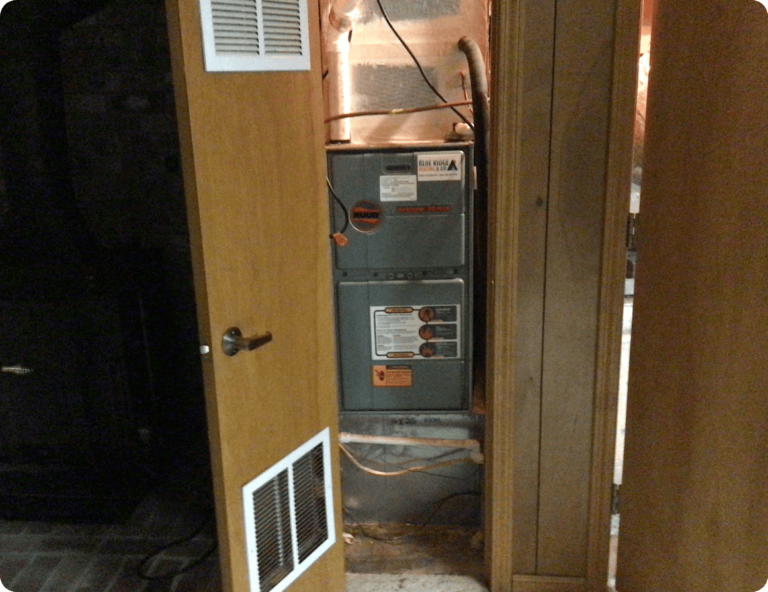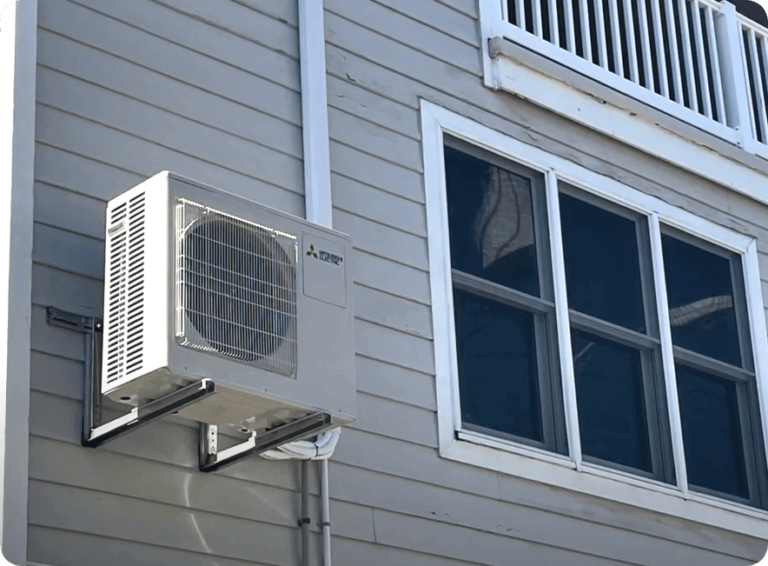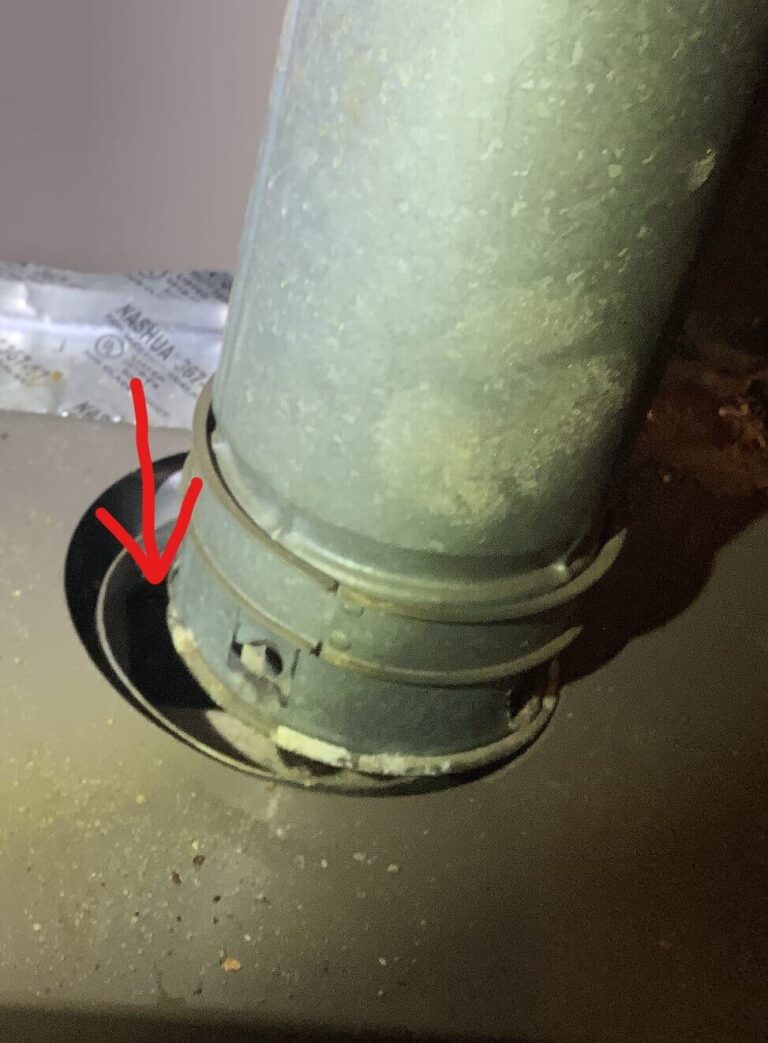The Cost and Benefits of Ductless Heat Pumps: A Comprehensive Guide
As energy efficiency and sustainability become increasingly important in today’s world, many homeowners are looking for effective ways to heat and cool their homes while
minimizing their environmental impact and saving on energy costs. One popular option that has gained significant attention in recent years is ductless heat
 pumps, also known as mini-split systems. In this blog post, we will explore the cost and benefits of ductless heat pumps to help you make an informed decision for your home.
pumps, also known as mini-split systems. In this blog post, we will explore the cost and benefits of ductless heat pumps to help you make an informed decision for your home.
Cost of Ductless Heat Pumps:
Like any home improvement project, ductless heat pumps come with an upfront cost. Blue Ridge Heating and Air is a certified Ductless Pro Elite and Diamond Elite dealer of Mitsubishi Electric equipment. Mitsubishi Electric is the leading manufacturer in innovation, quality, and customer value.
The cost of purchasing and installing a ductless heat pump system generally starts around $4900 for a single head system, and can vary depending on factors such as the size of your home, the number of indoor units needed, the energy efficiency rating of the system, and the location of your home. While the initial cost of ductless heat pumps may seem higher compared to traditional heating and cooling systems, it’s important to consider the long-term benefits and potential cost savings that come with using these systems.

Benefits of Ductless Heat Pumps:
- Energy Efficiency: Ductless heat pumps are highly energy efficient, providing both heating and cooling capabilities in a single system. These systems use inverter-driven compressors that adjust their speed to match the heating or cooling needs of a room, which helps to maintain a consistent and comfortable indoor temperature while reducing energy waste. Additionally, because ductless heat pumps do not require ductwork, which can be a source of energy loss in traditional HVAC systems, they can be up to 30% more efficient, resulting in lower energy bills. Duct systems are typically located in unconditioned attics or basements which have a large temperature difference from the air inside the duct system. Frequently, there are leaks in duct systems that also contribute to losses. In fact, a leak in your return in means that your system is ingesting attic or crawl space air and pumping it into your home.

- Zoning Flexibility: One of the significant benefits of ductless heat pumps is their zoning flexibility. Each indoor unit can be independently controlled, allowing you to customize the temperature in each room or zone of your home. This means you can heat or cool only the rooms that are in use, avoiding wasted energy in unoccupied areas. This zoning capability also eliminates the need for separate thermostats or complex ductwork modifications, giving you precise control over your home’s comfort and energy usage.

- Practical Installation: Ductless heat pumps are a practical alternative compared to traditional HVAC systems that require extensive ductwork. The indoor units can be mounted on walls or ceilings, and the outdoor unit can be installed outside your home. Only a small hole is needed to connect the indoor and outdoor units, making installation less invasive and more cost-effective. These are particularly appropriate when retrofitting an existing house, finishing a basement or sunroom, etc. where there is not already an allowance for ductwork.

- Versatility: Ductless heat pumps are versatile and can be used in various applications, making them suitable for different types of homes, such as single-family homes, multi-family homes, and commercial buildings. They can be used as the primary heating and cooling system or as a supplement to an existing HVAC system to improve efficiency and comfort in specific areas.
- Environmentally Friendly: Ductless heat pumps are also more energy-efficient, reducing greenhouse gas emissions and helping to reduce your carbon footprint. By using a ductless heat pump, you are contributing to a greener environment and doing your part to combat climate change.
- Improved Indoor Air Quality: Traditional HVAC systems with ductwork can accumulate dust, dirt, and other allergens, which can negatively affect indoor air quality. Ductless heat pumps do not use ductwork, which means there are no hidden spaces for dust or dirt to accumulate. Additionally, ductless heat pumps often come with built-in air purifying features, such as filters that capture airborne particles, improving the indoor air quality and creating

Types of Ductless Applications
Single zone system
The most common application is a single zone system. This consists of one outdoor unit and one indoor unit, typically a wall mount unit. Typical applications are in a home’s bonus room or “FROG” (Finished Room Over Garage). These rooms typically have a high heat load with the ceiling, floor and normally at least 2 walls exposed to the outside or unconditioned areas. Furthermore, they are often at the other end of the house from the air handler or furnace, so air flow can be underwhelming if the duct system was not sized optimally.
Another application is house additions. It’s tempting to “tap into” the existing duct system with one or two new supply runs, but the original equipment and duct system often is not sized to handle this additional load.
A single-zone mini-split is the perfect solution to provide dedicated temperature and humidity control to these applications without taxing other parts of the home, while doing so at a very efficient energy consumption rate.
As mentioned earlier, the price of a single zone system can vary with several factors. For example, a simple single-zone 9000 Btu wall-mount system can be between $5500 and $8200 depending on the efficiency capability of the equipment selected.

Multi-zone system
Multi-zone systems are growing in popularity because they are such a practical solution to common problems. A multi-zone system consists of one outdoor unit and multiple indoor units. The number of indoor units can be as low as two, or as high as eight. These are ideal in applications where there are multiple rooms that need to be conditioned. This enables unique dedicated climate control of each room served by an indoor unit.
Pricing for multi-zone can vary greatly depending on the efficiency of the equipment selected, and the complexity of the installation. All of the indoor units are connected to the outdoor units with the refrigerant piping and control and power wiring. Additionally, each indoor unit must have a drain installed to route the condensate water out of the home. The distances, unit locations, home construction features, and the like all impact the difficulty and time to complete the installation. For example, a 2 Ton multi-zone system with 3 indoor units would be priced in the $12,000-$15,000 range.

Multi-zone systems can also have one or more traditional air-handlers as indoor units, to which a local duct system can be installed. This is ideal for areas like a master bedroom suite in which the homeowner wants conditioned air supplied to the bedroom, the master bathroom, one or more walk-in closets, etc. This air-handler would have its own thermostat for local climate control.

Whether you are in need of a solution to address that nuisance bonus room over your garage that is always too hot or too cold, or you are looking at upgrading the comfort in you entire home or addition; Blue Ridge Heating and Air is ready to help you arrive at a solution that you will be happy with.




